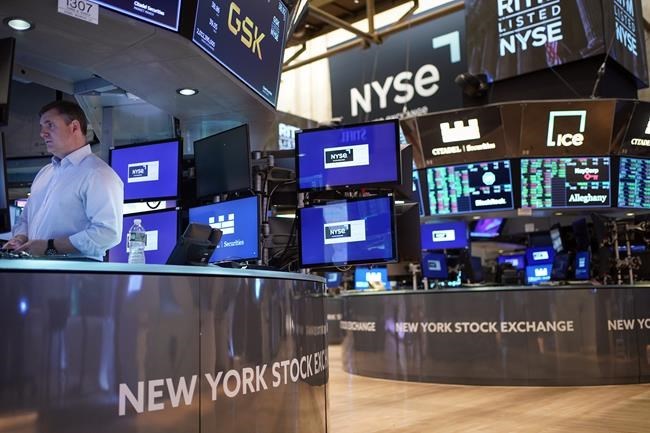NEW YORK — Stocks closed lower on Wall Street, putting major indexes deeper in the red for the week. The S&P 500 fell 1.1% on Thursday. The benchmark index is down for the week following the biggest pullback for the market in more than two years on Tuesday. Railroad operators were mostly higher after a tentative labor agreement was reached, averting a strike across the country that could have been devastating to the economy. Software maker Adobe fell sharply after announcing a $20 billion acquisition of a design company and issuing a disappointing revenue forecast for the current quarter.
THIS IS A BREAKING NEWS UPDATE. AP’s earlier story follows below.
Stocks are lower in afternoon trading on Wall Street Thursday, putting major indexes deeper in the red for the week.
The S&P 500 fell 1.4% as of 3:35 p.m. Eastern. The benchmark index is down 4.3% for the week following the biggest pullback for the market in more than two years on Tuesday.
The Dow Jones Industrial Average shed an early gain and was down 220 points, or 0.7%, to 30,909 and the Nasdaq fell 1.7%.
Technology stocks were among the biggest weights on the broader market. Adobe slumped 17.2%, the largest drop among S&P 500 stocks, after the software maker announced a $20 billion acquisition of a design company and issued a disappointing revenue forecast.
U.S. crude oil prices fell 3.8% and weighed on energy stocks. Hess fell 2.9%.
Railroad operators were mostly higher after a tentative labor agreement was reached, averting a strike across the country that could have been devastating to the economy. Union Pacific rose 0.1%.
Bond yields rose. The yield on the 10-year Treasury, which helps dictate where mortgages and rates for other loans are heading, rose to 3.46% from 3.40% late Wednesday. The yield on the two-year Treasury rose to 3.86% from 3.79%.
Investors were digesting the latest report on retail sales, which gave a mixed view of how consumers are coping with the hottest inflation in four decades. The government report showed that retail sales rose an unexpected 0.3% in August after falling 0.4% in July. Inflation hurt several areas of spending, though, with business at restaurants still growing, but at a slower pace, while furniture and online sales fell.
Consumer spending has been a strong point in the broader economy, along with employment, as inflation continues to squeeze businesses and consumers. High prices and the Federal Reserve's aggressive plan to raise interest rates as a solution remains Wall Street's main focus.
A hotter-than-expected August report on consumer prices Tuesday spooked the market and dashed hopes that the Fed might consider easing its rate hikes. It was followed on Wednesday by a report that wholesale prices are still rising.
Investors worry rate hikes by the Fed could go too far in slowing the U.S. economy and send it into a recession. The central bank has already raised its benchmark interest rate four times this year, with the last two increases by three-quarters of a percentage point. Traders now see a 1-in-5 chance the Fed may hike its benchmark rate by a full percentage point next week, quadruple the usual move, according to the CME Group.
Damian J. Troise And Alex Veiga, The Associated Press




